Regenerating Our Coasts is trialling an active restoration method for coastal wetlands along the Victorian coastline in Australia. The work entails the addition of local saltmarsh, mangrove and seagrass seeds and young plants to biodegradable structures made of potato starch. The idea is that the structures will attenuate water movement, while building up and stabilising sediment that will benefit transplant and seed establishment.
Now that we have set up several sites, we will be monitoring our restoration plots and our method overall. Over the next two years, we will be assessing two key features: soil responses and plant responses.
Soil responses
Soil accumulation
Part of monitoring our includes measuring how much sediment has built up in and around the biodegradable structures. As seen below, some structures at our mangrove sites have experienced significant accumulation of sediment, and some of these structures are located where sediment is scarce or very compact. This is a good start, as a new or additional layer of sediment may help successful establishment and growth of seeds and seedlings in the next seeding season. We will continue to monitor the accumulation of sediment and consider how this may influence our approach to the next seeding and planting of seedlings.
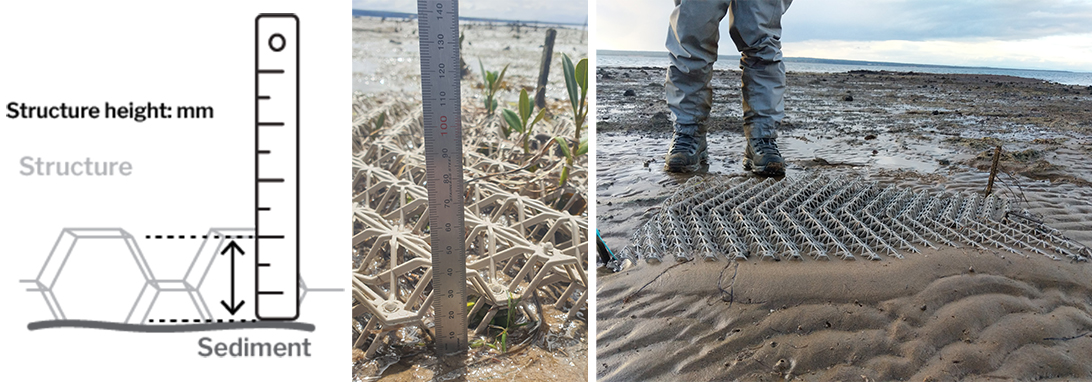
Soils accumulating in and around the biodegradable structures
Changes in soil chemistry
We have analysed the porewater nutrients at each site, to determine the levels of ammonia, phosphate and nitrate/nitrite available within the soils, and how this differs between the sites. By periodically measuring porewater nutrients, we can get an understanding how nutrients change over time and site. The level of nutrients may influence vegetation growth in each ecosystem. Aligning this information with changes in redox and survival rate of seeds and seedlings, will help us better understand the challenges at each site.
Oxidation reduction potential (ORP), also known as redox, indicates how oxidised (aerobic) or reduced (anaerobic) the soils are. Microbial metabolism, soil composition, inundation, salinity, and oxygen produced by plant roots all influence the redox potential. Waterlogged soils are typically anoxic and produce highly negative redox values, and for coastal wetlands, it is typically due to sulphate reduction. As plants and their roots start to establish, they will introduce oxygen in the sediment, and an increase in redox potential in an around the roots (or rhizosphere) may occur. This change in soil oxygen availability can favour different microbial metabolisms and benefit other plants (see here for an explainer).
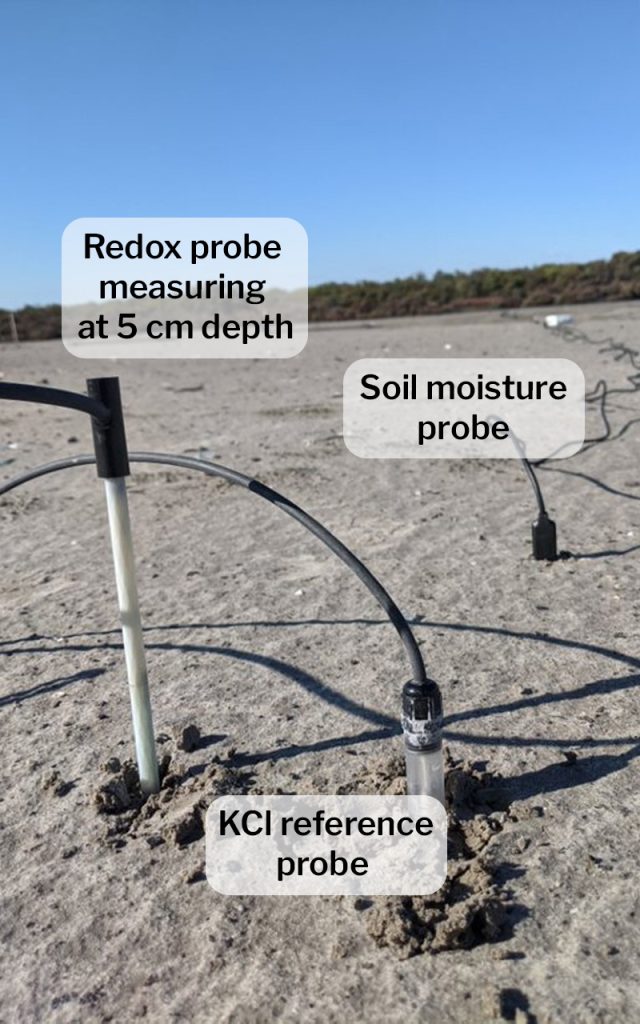
Redox and soil moisture probes
Plant responses
Seed and transplant survival
The most obvious thing we consider when monitoring our plots, is whether the little guys are surviving. After we put in seeds or transplants in structures or straight in the sediment, they are on their own, and exposed to both weather events and various animals that may find them tasty. Therefore, first thing we do, is assess the number of survivors. From observing how the mangrove seeds start germinating, and how the seedlings grow, we have already learnt a lot about how we can improve placing the mangrove seeds. We will start our saltmarsh seed and transplant monitoring this winter.
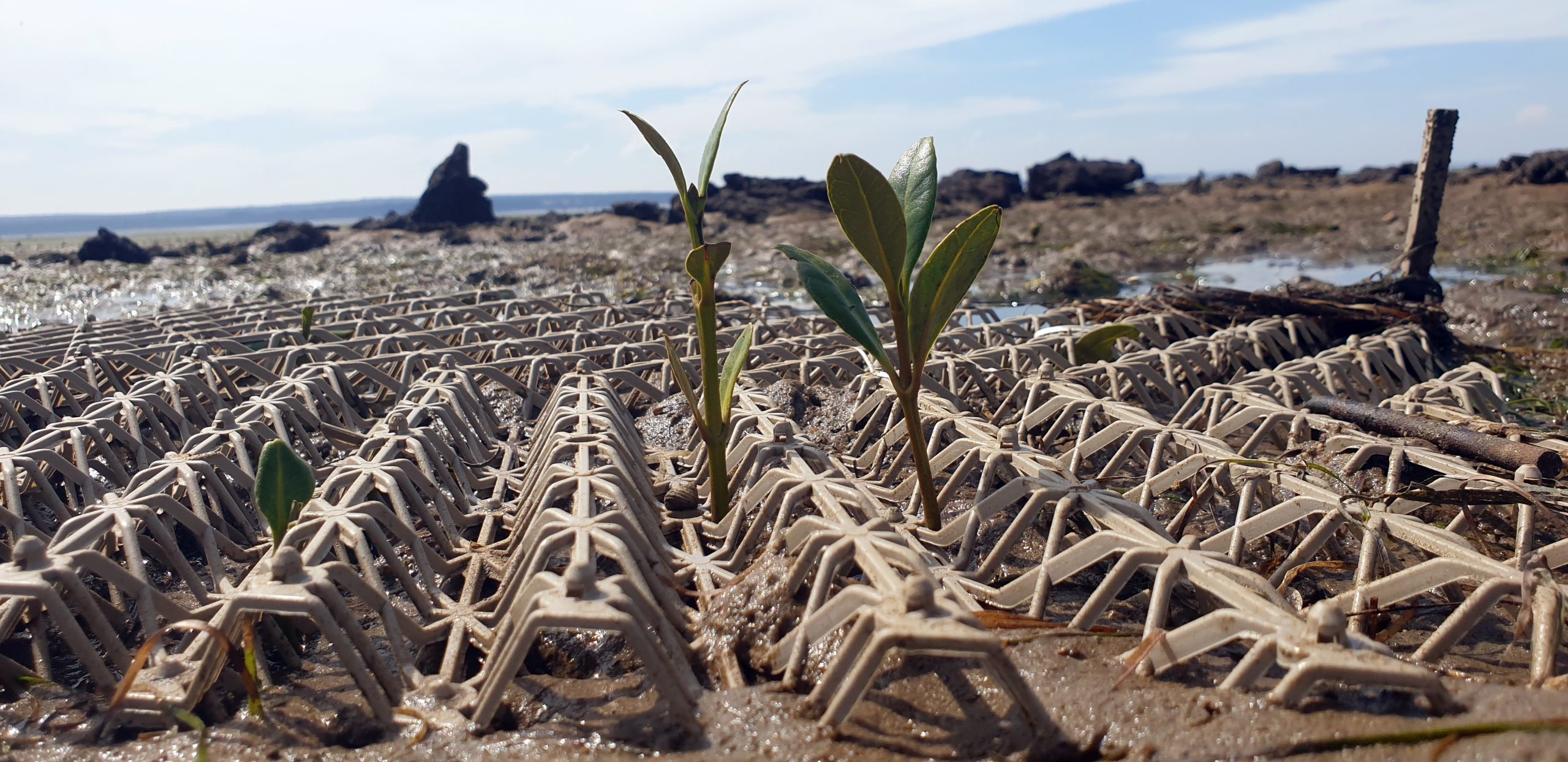
Mangrove seedlings growing through the structure, assisted by the accumulating soil
Seedling height and leaf pairs
We also want to assess the progress of surviving seedlings. For this, we measure both the height and number of leaf pairs of each individual seedling. By doing this, we are able to compare growth rate both within and among sites, and combined with our site assessment and soil monitoring, we hope to get a good idea of what influences both the survival and growth rate of the mangroves.
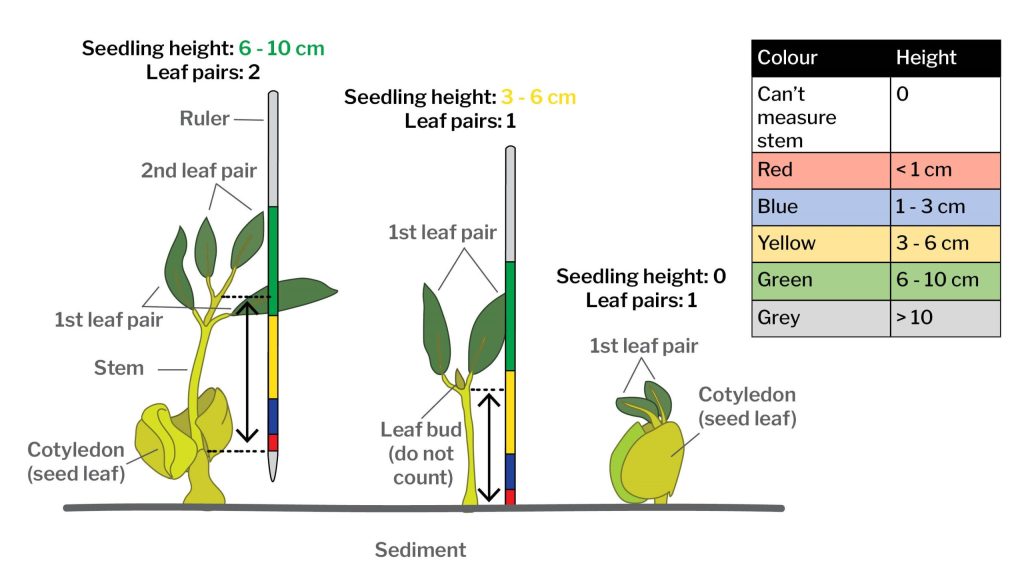
Measuring seed survival and seedling growth with a rapid categorical height method
Plant growth and cover
As mentioned, we have yet to monitor the survival and growth of our saltmarsh sites, where we have seeded and transplanted the pioneer species Salicornia quinqueflora. Our monitoring will include counting the number of germinated seeds and counting the number of stems and area of expansion in each transplant. Stay tuned for more on this!
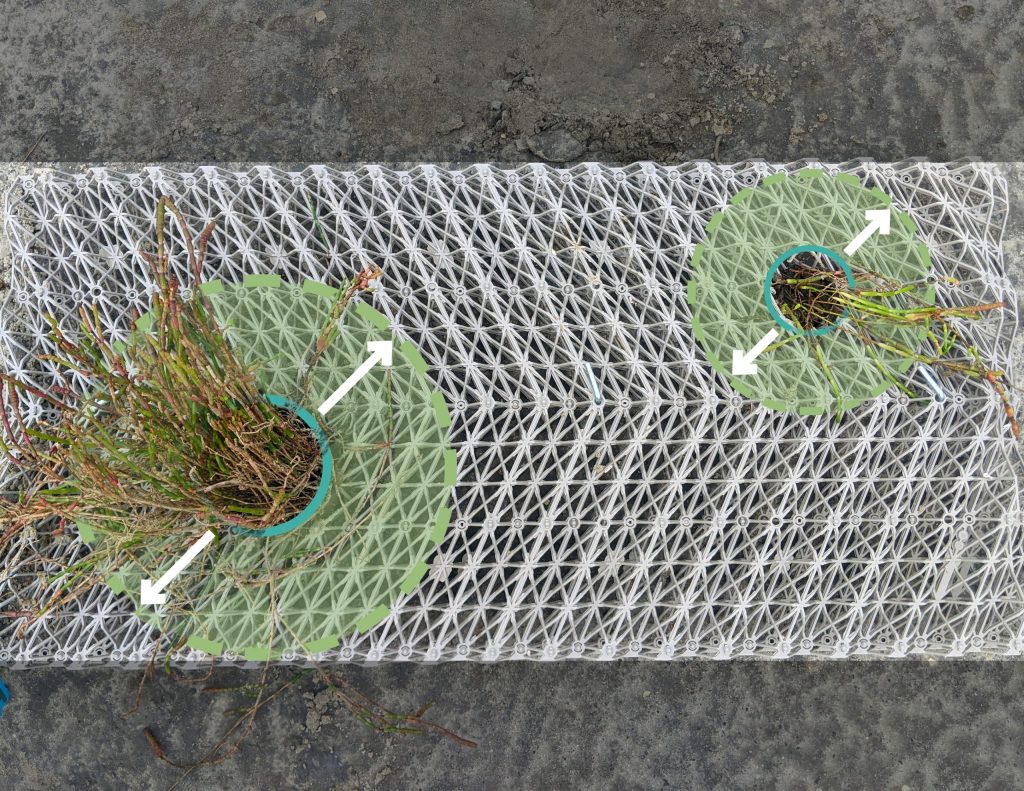
We expect that saltmarsh transplant cores will begin to expand and grow through the structures over time
